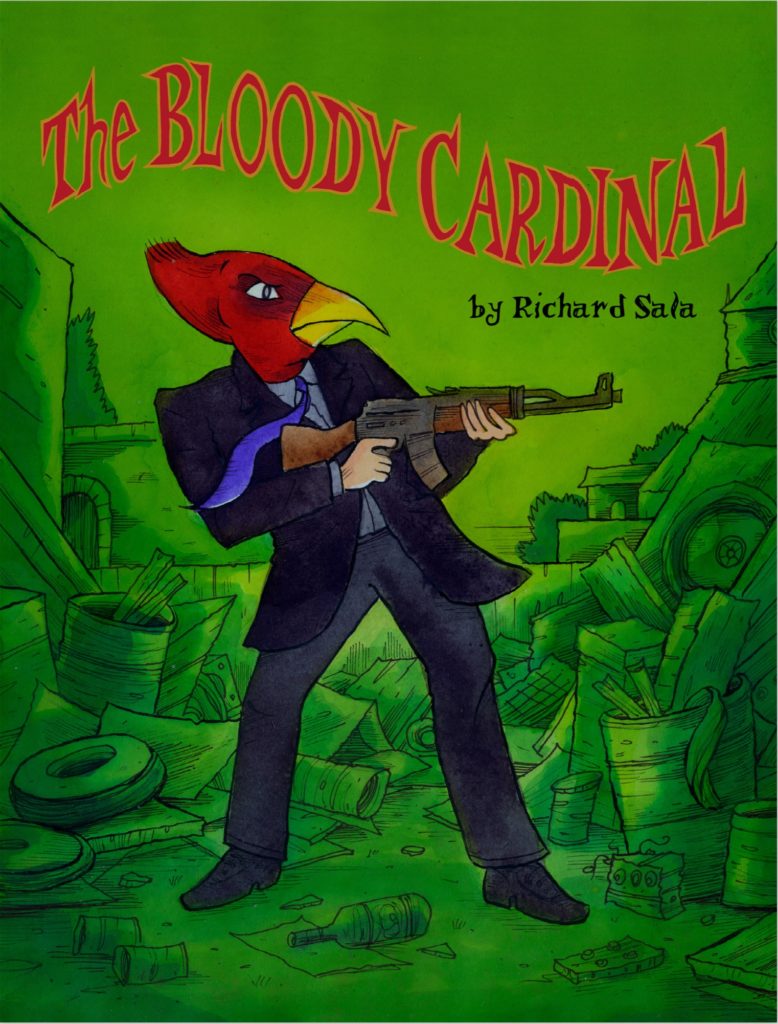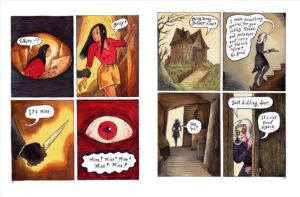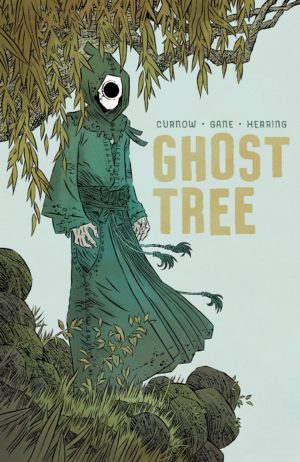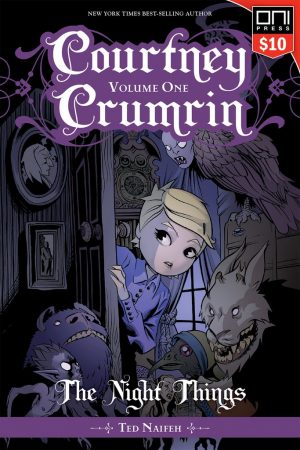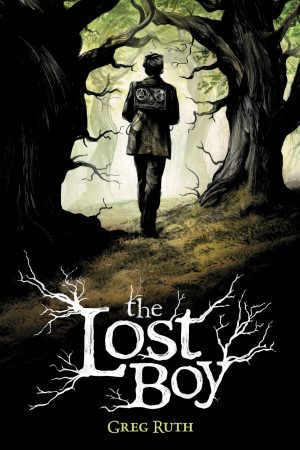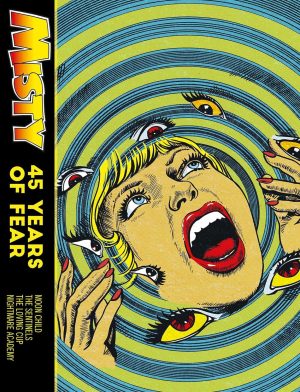Review by Graham Johnstone
The biography on Richard Sala’s blog notes that he “…grew up with a fascination for musty old museums, dusty old libraries, cluttered antique shops, narrow alleyways, hidden truths, double meanings, sinister secrets and spooky old houses”, all of which, as it happens, are to be found The Bloody Cardinal.
In a career spanning four decades Sala created his niche with playfully ironic updates of fairy tales and gothic horror, in books like Mad Night and Peculia. His distinctiveness, though can disguise his range. This follows 2014’s In a Glass Grotesquely, which saw Sala take a convincing side-step into pulp crime, with a story of a legendary criminal mastermind Super Enigmatix. The Bloody Cardinal is a similarly mysterious figure, a masked hero, who, disillusioned, turns to gratuitous crime, and is believed perished in an asylum fire.
The plot revolves around the search for the Cardinal’s legendary diary, thought by some pure poetry, and by others a set of clues to untold riches. Sala opens with a series of “depictions of excerpts” from ‘a’ diary, then a promising lead for Clara Clarette, sees her killed, but only after having hidden what may be the diary. Tweedy Inspector Coronet, and dapper Asian mystic Dr. Sun are called in to investigate the murder. Their first stop is Clara’s museum colleague, Trini Toledo, who reveals that she and the deceased were members of ‘Study of Theories of Aberrant Behaviour’ (S.T.A.B.), the members of which may be competing to find the legendary book and all that comes with it…
In ninety short pages Sala spins an intricate page-turner. His particular skill is breathing new life into familiar tropes, and challenging narrative expectations. He broke the ‘rule’ of goal driven protagonists with wandering innocent Peculia, and here there are multiple characters in the chase, not necessarily making it to the end, with it all held together by the search for the Cardinal and his book.
The Bloody Cardinal ends, appropriately enough on a cliffhanger, and the story continues in a sequel House of the Blue Dwarf, posted on Sala’s Tumblr page. He completed it prior to his death in 2020, noting that it was to be published “in an omnibus in 2020” – presumably with the current volume, and perhaps the similarly formatted In a Glass Grotesquely.
Sala’s fine art training shows in his mastery of composition, artful simplification of figures, flattened perspectives, emphasis on clarity rather than illusionism, and (originally) in his woodcut style ink rendering. He latterly moved into colour, but the opening sections depicting the Cardinal’s diary, a series of full page compositions symbolising the Cardinal’s exploits, dazzlingly exemplify his ink style. For the coloured pages he avoids heavy inking, relying instead on loosely expressive outlines, adding only minimal hints of texture for woodwork or burlap, relying on his colour washes to add weight. He uses the whole vivid palette of what appears to be coloured inks as the hues are more intense than watercolours, and unlike watercolours, once dried are fixed, and can be overpainted, to build up layers of colour and tone. There’s no denying the importance of digital creation in modern comics, but it’s refreshing to see such confident use of traditional media.
Compared to its closest companion In a Glass Grotesquely, The Bloody Cardinal does lack some of it’s predecessor’s deeper, and highly topical themes, of news and information as means of control, but that’s all part of the diversity in Sala’s deceptively consistent ouvre. Anyone looking for a witty entertaining romp through pulp fiction should enjoy this.
